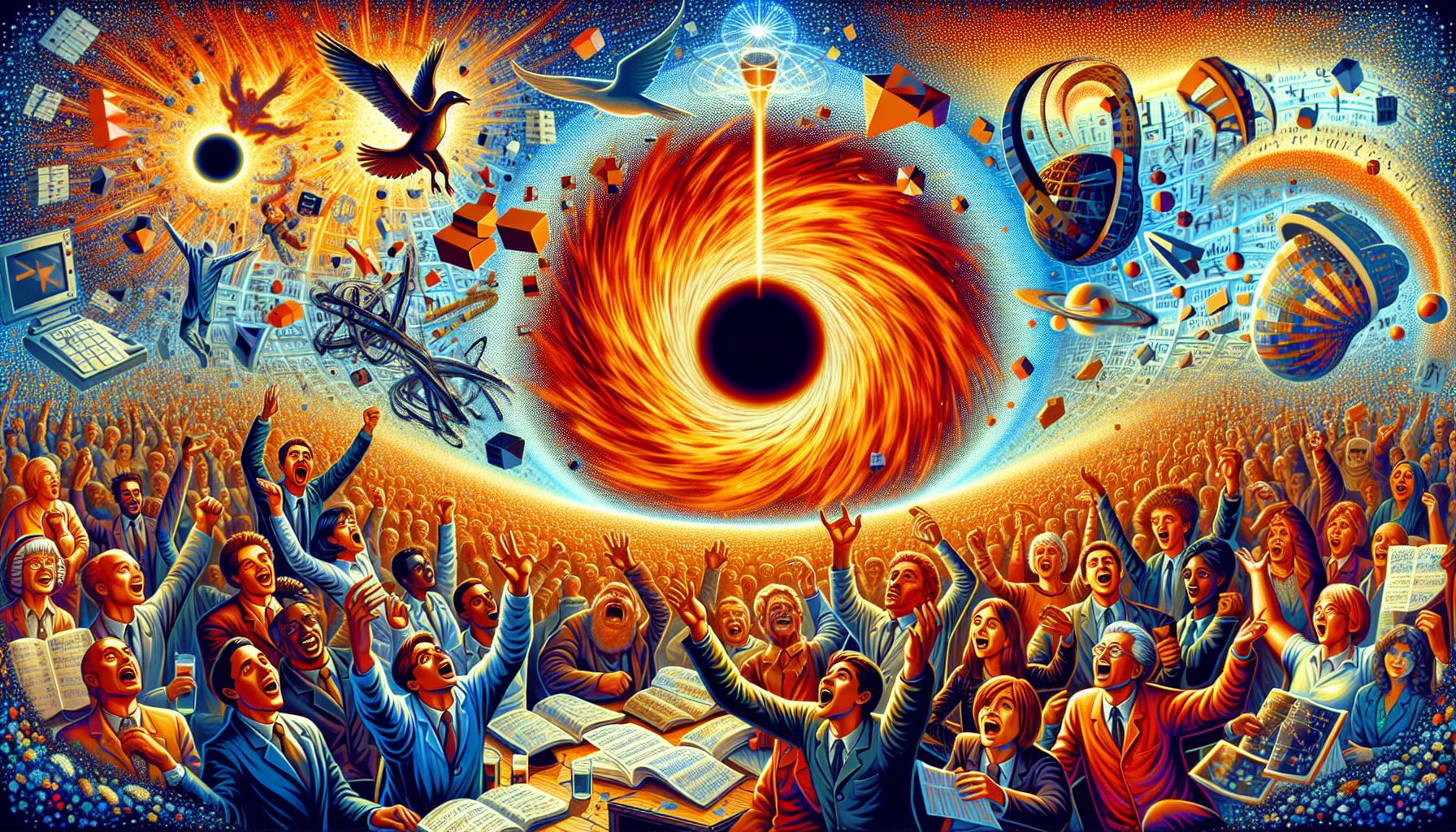Mathematicians Prove Extremal Black Holes Can Exist

N/A, Monday, 16 September 2024.
Recent research challenges Stephen Hawking’s theory, proving extremal black holes—with maximum charge or spin for their mass—are possible. This finding contradicts a 50-year-old hypothesis and could revolutionize our understanding of astrophysics and the universe’s structure.
Groundbreaking Mathematical Proof
A recent proof by mathematicians Christoph Kehle from the Massachusetts Institute of Technology (MIT) and Ryan Unger, associated with both Stanford University and the University of California, Berkeley, has shaken the foundations of black hole physics. Their research demonstrates that extremal black holes, those with the maximum possible charge or spin for their given mass, can indeed exist. This directly contradicts a 1973 hypothesis put forth by Stephen Hawking, James Bardeen, and Brandon Carter, which asserted that such black holes could not form in the real world.
Unique Characteristics of Extremal Black Holes
Extremal black holes are distinct in that they possess zero surface gravity at their event horizons. This means that the gravitational pull at their boundary does not attract objects, a property that starkly contrasts with traditional black holes. The proof presented by Kehle and Unger undermines the third law of black hole thermodynamics, which posited that a black hole’s surface gravity could never reach zero within a finite time frame. ‘The third law is dead,’ stated Unger, emphasizing the radical nature of their findings.
Implications for Astrophysics
The possibility of extremal black holes introduces a host of new questions and potential research avenues in astrophysics. These black holes, with their unique properties, suggest a more intricate and varied universe than previously understood. Mihalis Dafermos, a mathematician at Princeton University, extolled the proof as ‘beautiful, technically innovative, and physically surprising.’ This work not only challenges existing knowledge but also provides a new lens through which to explore the cosmos.
The Road Ahead
Despite this groundbreaking proof, the practical existence of extremal black holes in nature remains to be confirmed. As Gaurav Khanna of the University of Massachusetts Dartmouth noted, ‘Just because a mathematical solution exists that has nice properties doesn’t necessarily mean that nature will make use of it.’ Consequently, further empirical research is needed to determine whether these theoretical constructs can be observed in the universe.
Future Directions
Kehle and Unger are not stopping here. Their future research will delve into the spin properties of extremal black holes, which present significant mathematical challenges. Their work has already identified errors in previous proofs and constructed alternative solutions to Einstein’s equations. This ongoing research could lead to even more profound insights into the nature of black holes and the fabric of the universe.

